Opening keynote: The Future of Integration (Richard Seroter)
In this amazing opening keynote Richard talked about the future of integration, what are the current trends and how to prepare for the future technologies?
The main question Richard tried to answer in his session is how the current trends change our typical XML application integration.
In our current integration enterprises it’s all about data volume, endpoints, technologies and destinations.
With the new trends like cloud computing, IOT, mobility, wearables and many other things we are introducing a whole new range of challenges to us integration specialists and companies.

Richard took us round all the current trends and tackled some of the more important implications on the integration industries.
It’s difficult to go through all of these trends and implications, so I would suggest to check out the slides of Richard when they are made available because they contain a very interesting overview of the current trends.
However I would like to give you the tips and suggestions which Richard gave us on how to prepare for this new revolution of trends.
First of all, BE ENGAGED! Get on Twitter and start following people, join conferences and meet-ups (even on technologies you never worked with) and most important of all share your knowledge with your co-workers.
GET EDUCATED! Learn the new products, protocols and new architectures by playing around and trying those hands-on. Never stop training yourself.
ENGINEER! Decompose current dependencies in your applications and integration solutions. Stay on the edge of technologies and give the latest technologies a try and most important of all. Try to automate as much processes as possible.
You can view his slidedeck here.
How to make everybody love SaaS (Sam Vanhoutte)

Sam Vanhoutte shared his vision & experience with the integration of SaaS in different architecture and exchange patterns which comes with certain challenges that have to be solved and how you could solve them going from external connectivity to security & identity to mobility.
He also showed us how easily you can add Salesforce to your infrastructure without creating a new Active Directory.
The key here is that each scenario will have their set of challenges depending on a lot of factors, for example: is it a Ground-to-Cloud, Cloud-to-Ground or Cloud-to-Cloud integration? It’s just a matter of finding the right technology/service to bridge the gap.
Integration project tips & tricks (Toon Vanhoutte, Serge Verborgh and Danny Buysse)
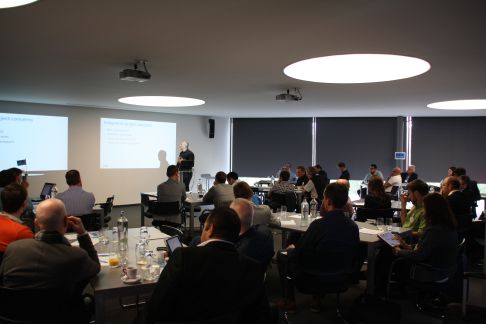
This session consisted of three different parts.
In the first part Serge explained the attendees what methodology Codit is using when doing an integration project, this methodology is not only applicable to Codit integration project but can be applied to any integration project.
It’s all about identifying and tackling some common concerns in an integration project in an early phase.
The second part of this session was handled by Toon and was all about continuous integration and Application Lifecycle Management (ALM).
The key in a good ALM setup is all about the repository, automated testing and deployment and behavior testing. Always know what codebase is deployed where!
To round it all up Toon demonstrated how to easily setup ALM and automated deployment with the help of some tools Codit has developed.
After Toon, Danny took the stage to talk about performance management and detecting issues on your platform in an early stage. He talked about the differences between application monitoring and performance management monitoring which is actually a story about re-active vs pro-active operations.
To do this pro-active monitoring Codit is using AIMS for BizTalk, read more information on the AIMS product.
Mobility: it’s not about the “if”, but about the “how to”! (Rudy Van Hoe)
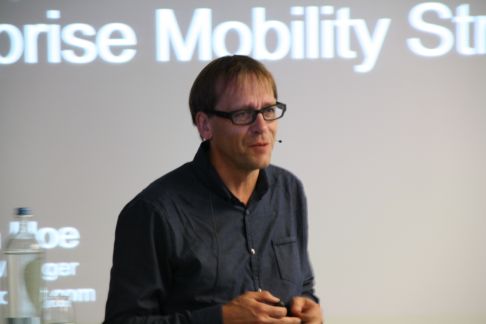
Rudy van Hoe walked us through the vision of Microsoft – what they have learned and why they made certain changes. He talked about the new Mobile first, cloud first model and how you can integrate mobility with your cloud IaaS/PaaS-infrastructure.
Look beyond the device and application, a testimonial (Hans Valcke).
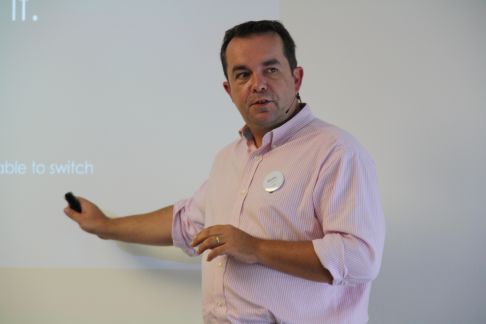
In the testimonial session Hans took us on a trip round the infrastructure setup of the Mohawk Group (Unilin). He gave us some idea on how do they tackle the challenges in their integration and services infrastructure with over more than 100 BizTalk Servers and several hundred services.
One of the key features to the success of their integration setup and manageability of their services is Sentinet, Hans demonstrated how they use the product in their enterprise. Read more information on Sentinet.
Next to managing BizTalk and services the integration team also has to manage connectivity to certain mobile applications. The biggest challenge there according to Hans is the data and the provisioning of the data and application.
Last but not least Hans gave us some tips for a successful mobile strategy vision, here are the some of the key tips:
• Decouple your applications from your ERP
• Stimulate your development team to re-use existing services
• Monitoring and alerting is the key to keep your application in a healthy state
• Make mobile development abstract from base services development
• Operate in a secure way
Internet of Things – Hype or Reality? (Piet Vandaele)
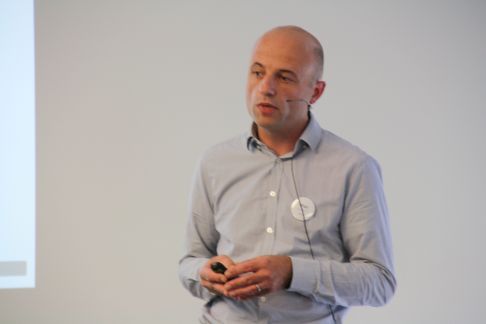
In this session Piet gave us an overview on what IOT is and what it’s all about and how IOT leverages a number of other trends.
IOT is really all about embedded sensors connected to the internet and to each other and allows businesses and manufacturer to make better decisions on the moment they need it.
The reason why IOT is booming right now can be brought down to 2 simple reasons being: there is a whole new range of chipsets available that are more power efficient when it comes to connectivity and they are more affordable than before.
The maturity model of IOT consists of three different stages, first we have the basic information support (reading out meter details for example), then we have the remote operation support and last we have the remove performance improvement support.
Piet demonstrated this model by showing some real life cases and scenario’s.
The most question asked when it comes to IOT scenarios is whether to create an onsite, cloud or hybrid (cisco routers and switches) implementation.
According to Piet it’s not an OR story but more an AND story, preprocess it locally and store and execute logic in the cloud.
Win of the day: How to fit a full day Summit in one single demo? (Tom Kerkhove and Sam Vanhoutte)

Sam Vanhoutte & Tom Kerkhove had built a demo that covered most of the topics covered during the day and raffled two bottles of champagne to the Kinect Play Box. Keep an eye on the Codit Blog for a detailed post on the demo!
Keynote: Marc’s Motivational Talk (Marc Herremans)
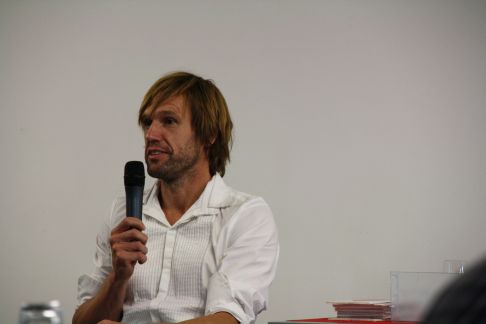
We had a full day of integration talks – which were very interesting – but we ended with a different kind of session: Marc Herremans joined us and told us about his life before and after his accident. He learned us – or at least me – that nothing can stop you from achieving your goals and you have to fight for the things you want to achieve and love, especially for your family as this is the most important thing in life.
This was a very interesting session that can’t be written down but I’d like to summarize it with a quote of Marc – “Every setback is an opportunity to fight back.”
Subscribe to our RSS feed